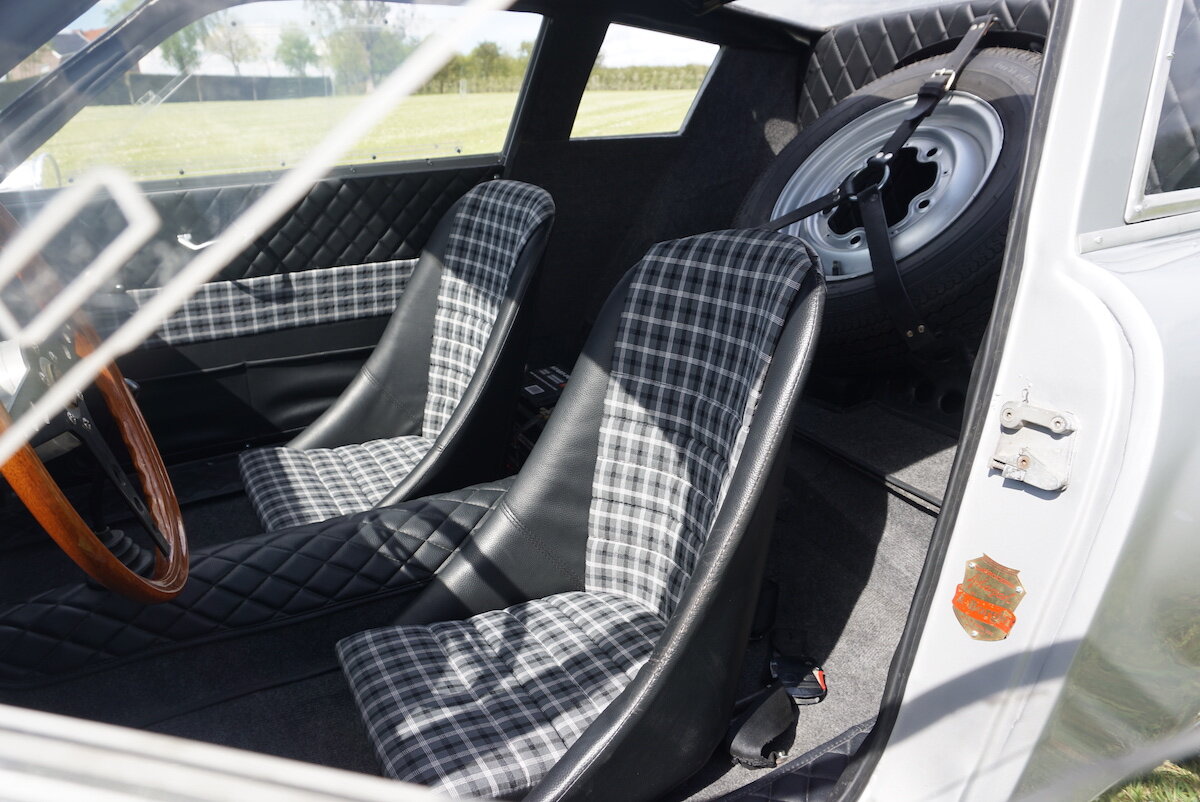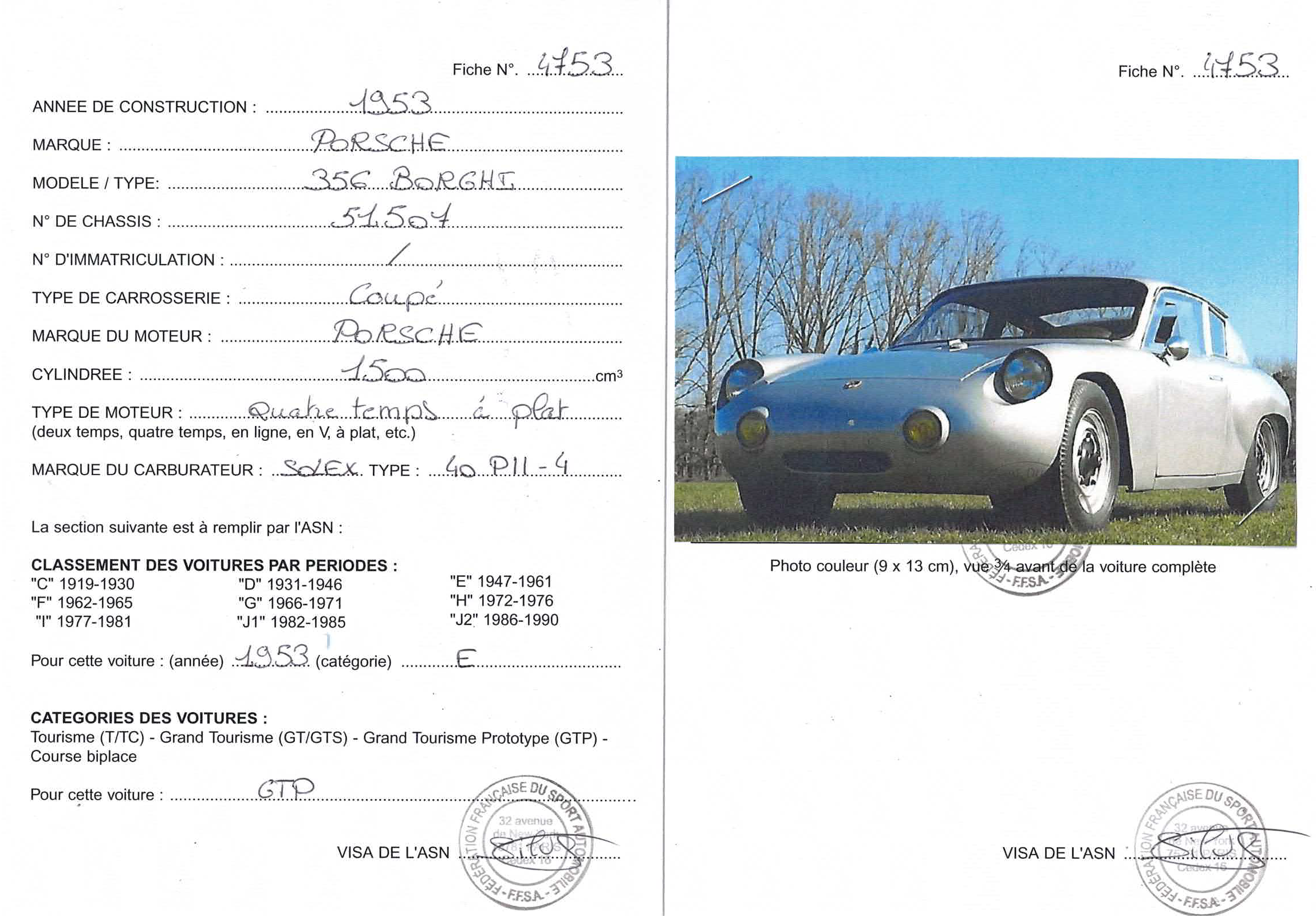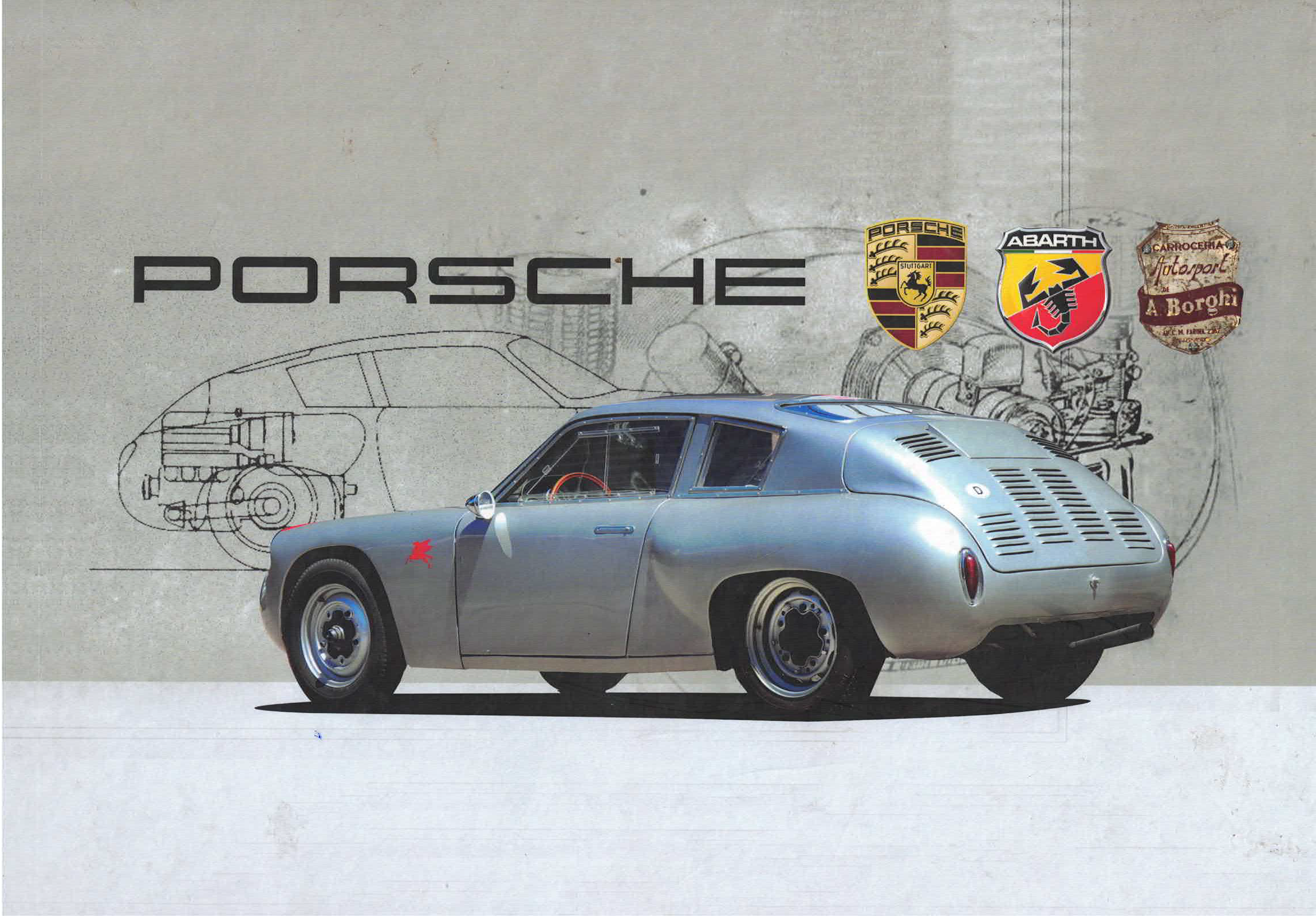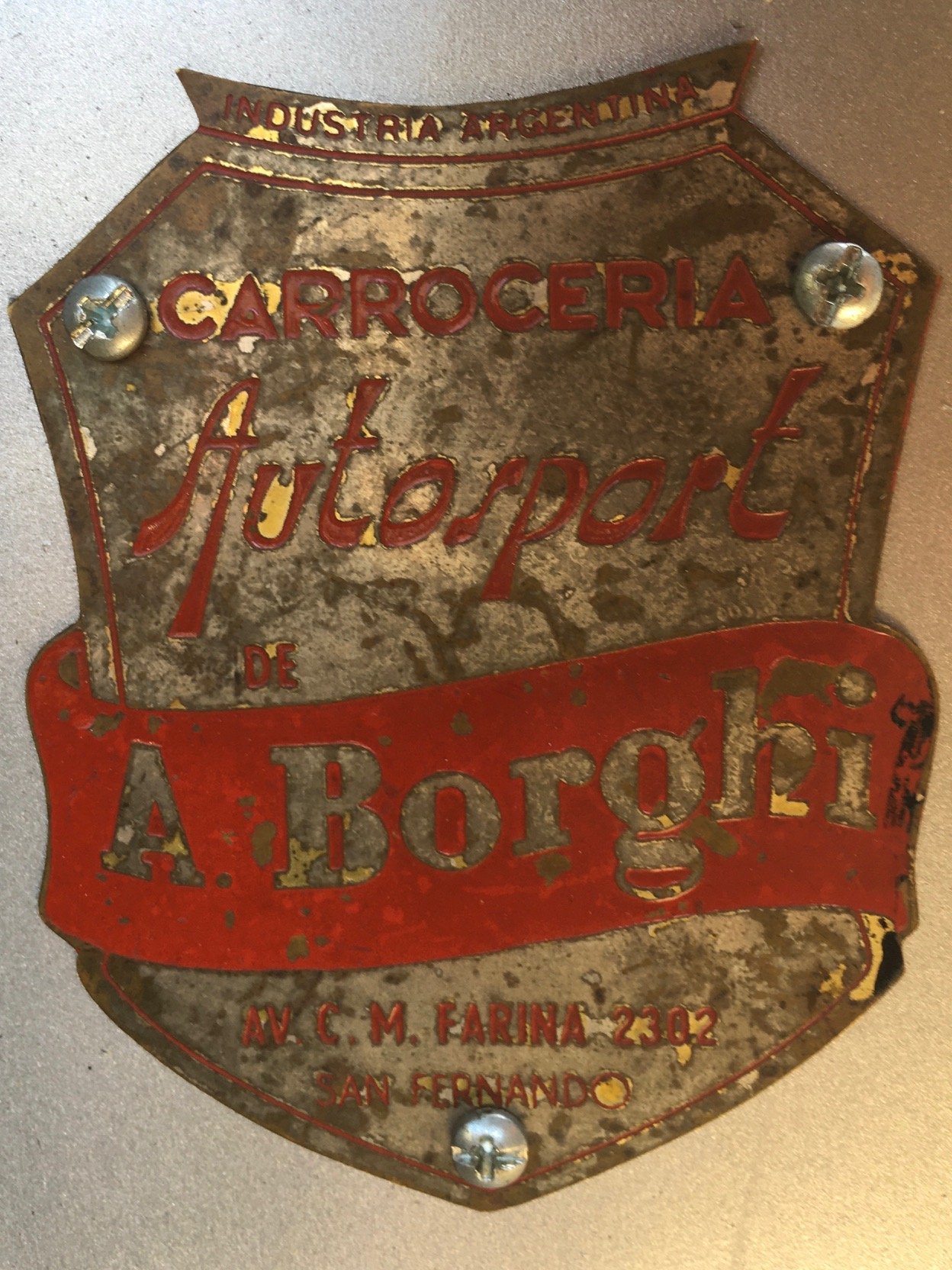Porsche 356 Borghi Abarth
specifications
brand
Porsche
mileage
/
year
1953
engine
1500cc
gearbox
4 speed manual
price
225.000 €
info
L'artisan italien Aldo Borghi qui, outre la Simca, a également travaillé sur la carrosserie de l'Alfa Romeo Boano de Gral, s'est installé dans la ville de Tigre, à Buenos Aires. Aldo Borghi crée un atelier de carrosserie pour les voitures spéciales et de compétition. À l'époque, il y avait peu d'artisans qui se consacraient à la carrosserie en aluminium. Dans ses ateliers, un grand nombre de voitures ont été carrossées, qui sont aujourd'hui des classiques de grande valeur, comme l'Alfa Romeo 2900 "Ballena", l'Alfa Romeo Spyder 6C 2500 "Paquito" (une voiture très spéciale aux lignes très harmonieuses qui a participé à la course de voitures de sport de "La Costanera 1951", remportée par une puissante Allard-Cadillac) ; l'Alfa Romeo 3000CM Carroceria Boano, restaurée et modifiée par Borghi après un accident ; la Simca-Gordini T11 avec laquelle Jean-Pierre Wimille a perdu la vie et celle utilisée par Fangio à Rosario en 1948 ont également été carrossées par Borghi et transformées en biplace pour courir dans les catégories argentines de voitures de sport en Argentine. Parmi tous ces travaux, Borghi a réalisé une voiture très spéciale sur des mécaniques de Porsche 356.
En 1963, Aldo Borghi a reçu d'un client une Porsche 356 à restaurer. Cette Porsche 356 a été produite en 1953 en tant qu'année modèle 1954 avec un moteur de 1.500 ccm type 546 produisant 55 PS. Suite à un incendie, la voiture a été complètement détruite. Il faut savoir que dans ces années-là, les mécaniciens des moteurs Porsche étaient bien connus en Argentine pour tous les projets équipés de ces mêmes moteurs Porsche, comme la Justicialista, la Zunder et la fameuse Teram - qui, sous licence Porsche, a fait de l'Argentine le seul pays au monde où l'on fabriquait des Porsche en dehors de l'Allemagne. Borghi fait des croquis et des dessins de différentes voitures de sport sur une structure de 356 et décide finalement de réaliser une carrosserie similaire à celle que Rocco Motto avait réalisée quelques années plus tôt en Italie pour la Porsche Abarth. Malgré des lignes très similaires, la carrosserie de la Porsche dessinée par Borghi présente des différences avec la carrosserie italienne, probablement pour la différencier de la voiture européenne.
Cette première version de la voiture, qui avait des lignes très agréables et élégantes, a été achevée en 1965, alors que les Porsche Abarth quittaient déjà la compétition européenne. En Argentine, la voiture n'a pas participé à des courses et son propriétaire l'a conservée jusqu'en 1972. Cette année-là, la voiture a été achetée par Borghi qui souhaitait la moderniser. Par la suite, il a participé à de nombreux meetings et courses de clubs sportifs. Il a couru à Rosario, Mar del Plata, San Nicolas, San Pedro. Il a participé à plusieurs rallyes. La voiture a cessé de courir dans les années 90 et son propriétaire l'a démontée pour la restaurer, ce qu'il n'a jamais fait. La voiture a été entièrement restaurée par son propriétaire suivant selon les spécifications Borghi Abarth de 1963. La voiture est accompagnée des papiers de la FIA, d'un historique complet.
Italian craftsman Aldo Borghi who apart from the Simca, he also worked on the bodywork of the Alfa Romeo Boano of Gral, settled in the city of Tigre, Buenos Aires. Aldo Borghi set up a body shop for special and competition cars. In those years there were few craftsmen dedicated to aluminium bodywork.
In his workshops a large number of cars were bodied which today are very valuable classics such as the Alfa Romeo 2900 "Ballena", the Alfa Romeo Spyder 6C 2500 "Paquito" (a very special car with very harmonious lines that appeared in the Sport car race at "La Costanera 1951", which was won by a mighty Allard-Cadillac); the Alfa Romeo 3000CM Carroceria Boano and it was restored and modified by Borghi after a crash; the Simca-Gordini T11 with which Jean-Pierre Wimille lost his life and the one used by Fangio in Rosario in 1948 were also were also bodyworked by Borghi and converted into a two-seater to race in the Argentinean Sport car categories in Argentina. Among all these works Borghi made a very special car on Porsche 356 mechanics.
In 1963 Aldo Borghi received a Porsche 356 from a customer for restoration. This Porsche 356 was produced in 1953 as a 1954 model year with a 1.500 ccm type 546 engine producing 55 PS. After suffered a fire the car was completely destroyed. The restoration was practically impossible, but the mechanics and its running gear were still of interest to the Italo-Argentinean coachbuilder.
It must be taken into account that in those years the mechanics from Porsche engines were well known in Argentina for all the projects that were equipped with those same Porsche engines, such as the Justicialista, the Zunder and the famous Teram - which under Porsche licence made Argentina the only country in the world where Porsche was manufactured outside of Germany.
Borghi made sketches and drawings of different Sport cars on a 356 structure and finally he decided to make a body similar to the one that Rocco Motto had made a few years earlier in Italy for the Porsche Abarth. Despite having very similar lines, the Porsche bodywork designed by Borghi has differences with the Italian bodywork, probably to differentiate it from the European car.
This first version of the car, which had very nice and stylish lines, was completed in 1965, when the Porsche Abraths were already leaving the European racing. In Argentina the car did not participate in races and its owner had it until 1972. That year the car was bought by Borghi thinking of updating it. Afterwards, he took part in many meetings and sport club races. He raced in Rosario, Mar del Plata, San Nicolas, San Pedro. He participated in several rallies. The car stopped racing in the 90's and its owner disassembled it for restoration, which he never did.
The car was fully restored by his next owner to the 1963 Borghi Abarth specification. The car comes also with FIA papers, full history and book present.























































